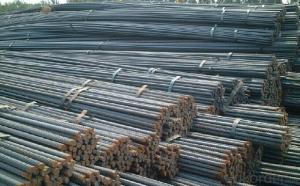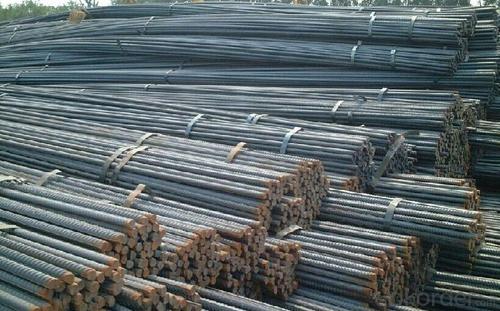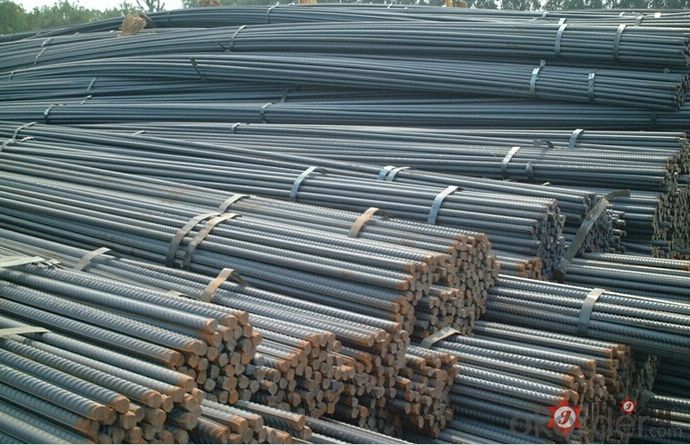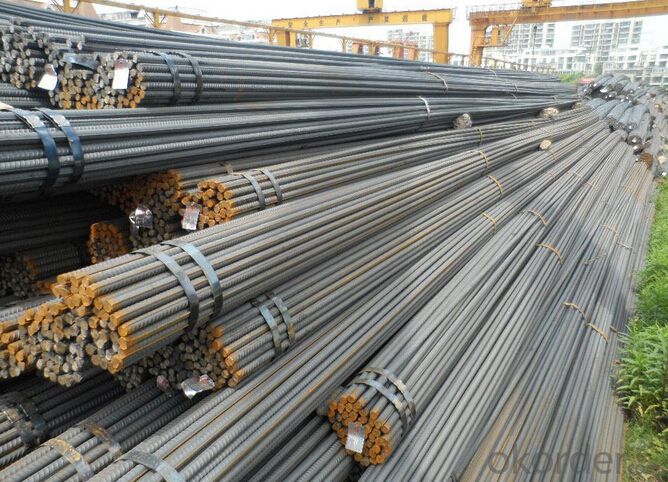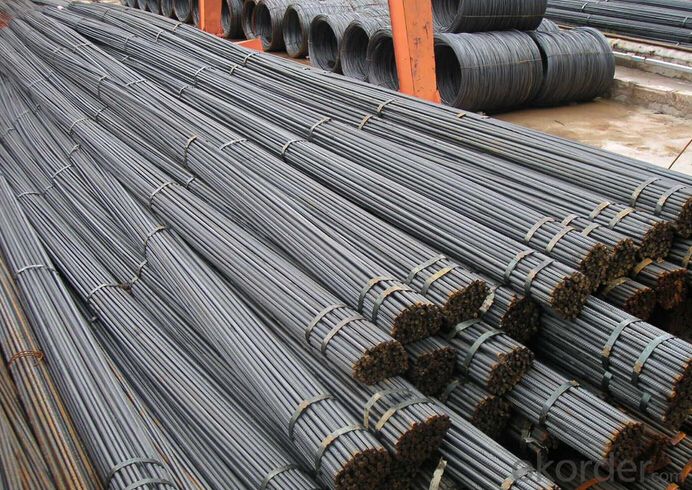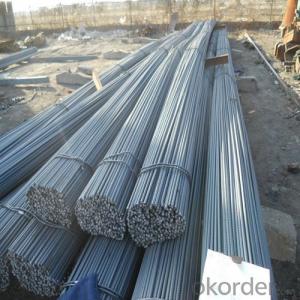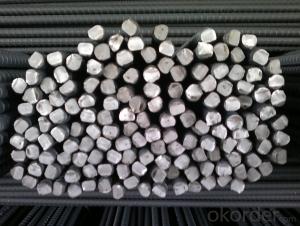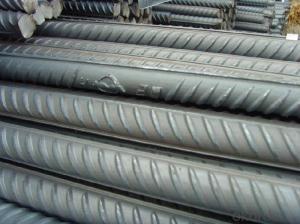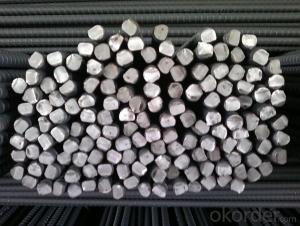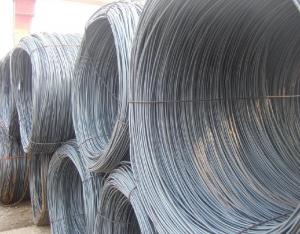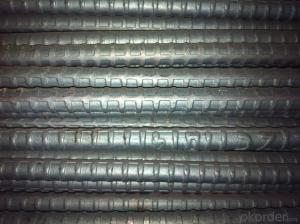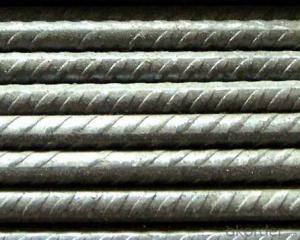Dia.12mm Alloy Steel Deformed Rebar in Coil
- Loading Port:
- Tianjin
- Payment Terms:
- TT OR LC
- Min Order Qty:
- 100 m.t.
- Supply Capability:
- 10000 m.t./month
OKorder Service Pledge
Quality Product, Order Online Tracking, Timely Delivery
OKorder Financial Service
Credit Rating, Credit Services, Credit Purchasing
You Might Also Like
Specification
Standard:
EN,API,DIN,BS,JIS,ASTM,AISI,GB
Technique:
Hot Rolled,Spring,EFW,Extruded,Saw,Forged,ERW,Cold Drawn,Cold Rolled
Shape:
Square,C Channel,Hexagonal,Round,Rectangular,Oval,LTZ,U Channel
Surface Treatment:
Galvanized,Coated,Copper Coated,Color Coated,Oiled,Dry,Polished,Bright,Black,PVDF Coated,Chromed Passivation
Steel Grade:
Q195,Q215,Q235,Q215B,Q235B,RHB335,HRB400,200 Series,300 Series,400 Series,600 Series,SS400-SS490,10#,20#,A53(A,B)
Certification:
ISO,SGS,BV,IBR,RoHS,CE,API,BSI,UL
Thickness:
8-32
Length:
12
Net Weight:
10
Dia.12mm Alloy Steel Deformed Rebar in Coil
Details of the Dia.12mm Alloy Steel Deformed Rebar in Coil
| Standard & Grade: | GB1499-98 : HRB335,HRB400,HRB500 |
| BS4449-1997 : GR460,GR500 | |
| CAN/CSA-G30.18-M92 : 400W | |
| ASTM A615 : Gr.40, Gr.60 | |
| Diameter: | 6mm;8mm;10mm;12mm;14mm;16mm;18mm;20mm;22mm;25mm;28mm;30mm;32mm;35mm;40mm |
| Length: | 6m,9m,12m |
| Packing: | Bundle packing |
| Origin: | China |
| Application: | Construction,Road,Machinery processing,Welding fields. |
| Delivery time: | 10-25 days |
| Shipment: | By bulk vessel or Container |
| Documents: | Mill Test Certificate,Commercial Invoice,Packing List,Certificate of Origin |
Company Introduction of the Dia.12mm Alloy Steel Deformed Rebar in Coil
CNBM International Corporation is the most import and export platform of CNBM group(China National Building Material Group Corporation) ,which is a state-owned enterprise, ranked in 270th of Fortune Global 500 in 2015.
With its advantages, CNBM International are mainly concentrate on Cement, Glass, Iron and Steel, Ceramics industries and devotes herself for supplying high quality series of refractories as well as technical consultancies and logistics solution.

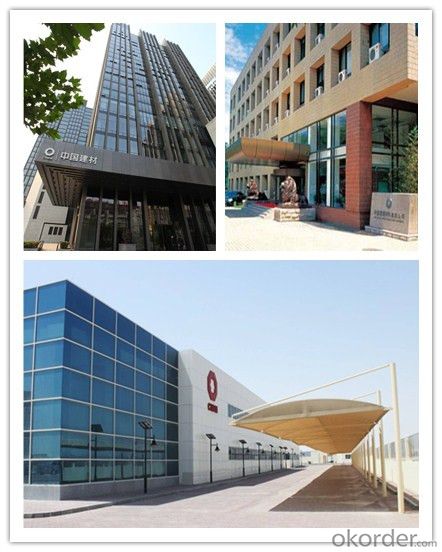
Packaging & Delivery of the Dia.12mm Alloy Steel Deformed Rebar in Coil
| Packaging Detail | Sea worthy packing /as per customer's packing instruction |
| Delivery Detail | 15 ~ 40 days after receiving the deposit |
FAQ
| Are you a trading company or manufacturer? | Manufacturer |
| What’s the MOQ? | 1000m2 |
| What’s your delivery time? | 15-20 days after downpayment received |
| Do you Accept OEM service? | Yes |
| what’s your delivery terms? | FOB/CFR/CIF |
| What's the Payment Terms? | 30% as deposit,70% before shipment by T/T |
| Western Union acceptable for small amount. | |
| L/C acceptable for large amount. | |
| Scrow ,Paybal,Alipay are also ok | |
| Why choose us? | Chose happens because of quality, then price, We can give you both. Additionally, we can also offer professional products inquiry, products knowledge train (for agents), smooth goods delivery, excellent customer solution proposals. |
| What's your available port of Shipment? | Main Port, China |
| What’s your featured services? | Our service formula: good quality+ good price+ good service=customer's trust |
| Where are your Market? | Covering more than 160 countries in the world |
- Q: What are the guidelines for proper curing of concrete structures with steel rebars?
- The guidelines for proper curing of concrete structures with steel rebars include ensuring that the concrete is adequately hydrated through moist curing methods such as sprinkling water or covering with wet burlap. It is crucial to maintain a consistent and controlled temperature and humidity environment during the curing process to prevent cracking and enhance the strength development of the concrete. Additionally, it is essential to avoid rapid drying and exposure to extreme temperature variations to avoid any potential damage to the steel rebars.
- Q: Can steel rebars be used in structures with high resistance to fire?
- Yes, steel rebars can be used in structures with high resistance to fire. Steel has a high melting point and retains its strength even at high temperatures, making it suitable for use in fire-resistant structures. Additionally, steel rebars can be coated with fire-resistant materials such as epoxy or intumescent coatings to further enhance their fire resistance. These coatings create a protective layer that prevents the steel from reaching its critical temperature and losing its structural integrity during a fire. Therefore, steel rebars are commonly used in various fire-resistant structures such as high-rise buildings, bridges, and industrial facilities where fire safety is a critical consideration.
- Q: How are steel rebars installed in construction projects?
- Steel rebars play a vital role in reinforced concrete structures in construction projects. The installation process of these rebars encompasses several steps. To begin with, the construction plans and specifications are thoroughly examined to determine the required size, length, and placement of the rebars. This information is crucial to guarantee that the rebars provide the necessary strength and support to the structure. Subsequently, the rebars are cut and shaped according to the specifications. This is typically accomplished using specialized tools like rebar cutters and benders. The rebars are generally supplied in lengthy pieces and are cut to the desired size on-site. Once the rebars are prepared, they are positioned and firmly secured in the formwork or molds that will shape the concrete. This is achieved by placing the rebars in the desired locations and using wire or rebar ties to hold them in place. The ties are typically twisted around the rebars using pliers or a similar tool. This ensures that the rebars maintain their correct positions during the pouring and curing of the concrete. During the pouring phase of the concrete, the rebars are meticulously positioned to ensure even distribution and adequate spacing. This is crucial for providing structural integrity and preventing the formation of weak spots in the concrete. After the concrete is poured, it is left to cure and harden. During this period, the rebars become embedded within the concrete, establishing a strong bond. This bond creates a reinforced concrete structure capable of withstanding various loads and forces. To summarize, the process of installing steel rebars in construction projects involves cutting and shaping the rebars, accurately positioning them within the formwork, and securing them in place using ties. This process is critical for creating durable and robust reinforced concrete structures.
- Q: What are the factors that can affect the lifespan of steel rebars in concrete structures?
- There are several factors that can affect the lifespan of steel rebars in concrete structures. These factors include the quality of the steel used, the level of corrosion protection provided, the exposure to harsh environmental conditions, the presence of cracks or voids in the concrete, and the maintenance and repair practices followed.
- Q: What are the different types of steel rebars used in tunnel constructions?
- There are several types of steel rebars commonly used in tunnel constructions, including deformed steel bars, epoxy-coated rebars, stainless steel rebars, and galvanized rebars. These rebars offer various benefits such as increased strength, corrosion resistance, and durability, making them suitable for different tunnel construction requirements.
- Q: How do steel rebars resist fire?
- Steel rebars resist fire due to their high melting point and low thermal conductivity. Steel has a melting point of around 1370°C, which is higher than typical temperatures reached in building fires. This allows rebars to maintain their structural integrity even in high-temperature environments. Additionally, steel has a low thermal conductivity, meaning it does not readily transfer heat, minimizing the risk of fire spread and structural failure. The combination of these properties makes steel rebars a reliable choice for reinforcing concrete structures in fire-prone areas.
- Q: Are there any environmental benefits to using steel rebars?
- Yes, there are several environmental benefits to using steel rebars. Firstly, steel is a highly recyclable material, meaning that it can be reused multiple times without losing its properties. This reduces the need for new steel production, saving energy and reducing greenhouse gas emissions associated with the manufacturing process. Additionally, steel rebars have a long lifespan and are resistant to corrosion, reducing the need for frequent replacements and further minimizing waste. Lastly, steel rebars can contribute to the strength and durability of structures, allowing for longer-lasting buildings and infrastructure, which reduces the environmental impact of constant repairs or reconstructions.
- Q: Can steel rebars be used in decorative concrete applications?
- Yes, steel rebars can be used in decorative concrete applications. They are often used as reinforcement in decorative concrete structures to provide strength and stability. Additionally, steel rebars can be incorporated into the design to create unique and aesthetically pleasing patterns or features, enhancing the overall decorative appeal of the concrete.
- Q: How are steel rebars inspected for quality on construction sites?
- Steel rebars are inspected for quality on construction sites through visual inspection, dimensional measurements, and various non-destructive testing methods such as ultrasonic testing, magnetic particle testing, and radiographic testing. These inspections ensure that the rebars meet the required specifications, are free from defects, and have the necessary strength and durability for their intended use in construction projects.
- Q: How are steel rebars connected together in construction?
- Steel rebars are typically connected together in construction through a process called rebar splicing. This involves overlapping the rebars and tying them together using wire or mechanical connectors. Additionally, couplers or threaded sleeves can be used to join rebars end-to-end, ensuring a strong and continuous reinforcement system.
Send your message to us
Dia.12mm Alloy Steel Deformed Rebar in Coil
- Loading Port:
- Tianjin
- Payment Terms:
- TT OR LC
- Min Order Qty:
- 100 m.t.
- Supply Capability:
- 10000 m.t./month
OKorder Service Pledge
Quality Product, Order Online Tracking, Timely Delivery
OKorder Financial Service
Credit Rating, Credit Services, Credit Purchasing
Similar products
Hot products
Hot Searches
Related keywords
